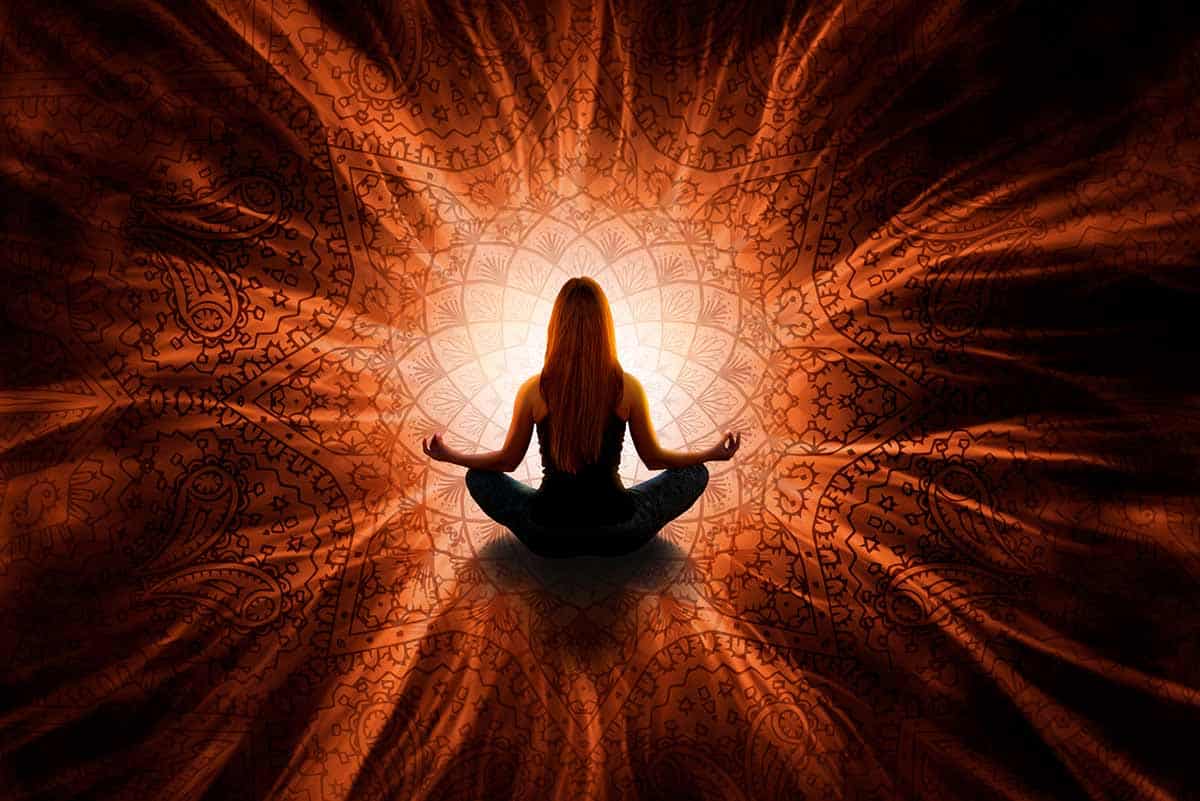Meditation is a widely practiced technique used to calm oneself down, reduce stress, and improve focus. In many cases, spirituality in meditation promotes one’s closeness with both the world around them and a higher power. If you are considering meditation, you might be wondering which mantra to use. So, what are the best meditation mantras on the planet?
Oftentimes, the best meditation mantras are the most traditional. On the other hand, however, individualization can be beneficial. The mantra you choose for meditation should reflect your reasons for meditating.
Continue reading to learn about the 7 best meditation mantras on the planet, as well as supplemental information regarding meditation. With the chance to personalize your own mantra, there are countless options to choose from. Particularly if you have no experience with meditating, it is a great idea to begin with a popular mantra that you find suitable for your meditation goals.
Table of Contents
What Is A Meditation Mantra?
A meditation mantra is a repeated syllable, word, or phrase spoken, thought, or written during meditation. Your mantra plays a major role in meditation; different mantras promote various aspects of mindfulness, while others help people connect with their spirituality.
Those unfamiliar with meditation may think using a mantra sounds silly. If you have never meditated before, the idea of meditation itself could seem far-fetched. As mentioned, however, your mantra is extremely important to the goal of your meditation. A meditation mantra allows you to focus on the present and put all of your mental, spiritual, and physical energy into your meditation.
As meditation is drawn from Hinduism and Buddhism, it is clear to see why mantras are so highly encouraged. Hindu and Buddhist monks recite mantras to connect with the present world around them. Similarly, ancient Christian religions are known to have recited mantras to verbally connect with God.
Though there are deeply spiritual roots in meditation and meditation mantras, secular meditation has become increasingly popular lately. Reciting a meditation mantra can help you clear your mind of even the most trivial challenges in your life. It is also useful for more serious obstacles, such as work, mental health, self-worth, and much more.
How Are Meditation Mantras Used?
Meditation mantras are used as a way to clear your mind of the problems you are facing in your life. If you can recite a mantra and focus on its purpose, you will be less inclined to let your thoughts hold onto stress, anxiety, guilt, fear, or anything else that might be holding you back.
When you choose a meditation mantra to use for your meditation, you will recite the mantra throughout your meditation. Some people recite the mantra for the entire meditation, while others use it as a tool to hone in their focus in the beginning.
Chances are that you are familiar with the ever-so-popular “Ohm” often satirized in pop culture. As you will see shortly, this is actually one of the best mantras to use. In any case, mantras are typically repeated out loud as you meditate. Some people recite the mantra in their head for different reasons, be it to surround themselves with verbal silence, because mental repetition works better for them, or any other personal reason.
What Are Some Examples Of Mantras?
There are endless mantras to choose from to use as your meditation mantra. In fact, you can make up your own mantra. A meaningful phrase or word that sits close to your heart or promotes your goal for meditation is a great tool to boost your meditation. You might be satisfied with something simple, like “I matter,” “My happiness is important,” or “Today will be a good day.”
In most cases, people who meditate use popular mantras with goals in mind. There are universal mantras based in ancient meditation and oftentimes in different languages. For example, many mantras are Sanskrit, while other popular ones are ancient Hawaiian mantras.
Some of the most popular mantras include “Ohm,” “Om Namah Shivayah,” and “I am that I am.” Depending on your reason for meditating, the mantra you choose should reflect why you have decided to meditate – at least, in most cases. Some people choose to recite a well-known mantra out of familiarity or satisfaction with a previous meditation.
The 7 Best Meditation Mantras On The Planet
With such a wide variety of mantras to use for meditation, it can be difficult to decide which one suits you best. Below are the 7 best meditation mantras on the planet. These mantras are not only used because of their popularity. They are used because of the meanings behind them. As you have learned, the meaning of your mantra is extremely influential to your meditation goal.
Om
Om, pronounced “Ohm,” is perhaps the most popular mantra on the planet. Ideally, Om promotes spiritual bliss. It is a sacred mantra of Hindus, Buddhists, and more.
Om is said to be the first sound in the universe, and it is meant to begin your meditation while manifesting sound mindfulness. Om represents that cycle of life and is an incredible mantra to use for various yearnings of relaxation.
Om Namah Shivayah
Om Namah Shivayah is another of the most popular Hindu mantras. It promotes both spirituality and a connection to the world around you. Omitting ‘Ohm’, the five-syllable recitation of ‘Na’ ‘Ma’ ‘Si’ ‘Vi’ ‘Ya’ represent earth, water, fire, air, and ether, respectively. The mantra is meant to connect one to nature through meditation.
I Am That I Am
The I Am That I Am mantra comes from God’s response to Moses when Moses asks who he is. Of course, this gives it quite a religious meaning, but it can also be used with secular mindfulness.
On one hand, it reminds whoever repeats it that God’s consciousness resides everywhere. In a different personal light, inhaling during the recitation and saying ‘ham’ in the middle of “I am” reaffirms one’s own presence, feelings, struggles, and triumphs.
Ho’oponopono
Ho’oponopono, pronounced ‘ho-oh-pono-pono’, is a Hawaiian mantra that translates to “I love you; I’m sorry; please forgive me; thank you.” Through meditation, it acknowledges optimism, humbleness, imperfection, and thankfulness.
Ho’oponopono is popular for people who seek meditation for negative feelings of anger, failure, shame, etc., though it can be used to speak of your appreciation for the good things that have happened to you.
Om Mani Padme Hum
Pronounced ‘Om-Ma-Ni-Pad-Me-Hum’, Om Mani Padme Hum is a Tibetan Buddhist mantra meant to promote compassion. Whether you have great successes or failures in your life, this mantra relieves you of your imperfections and allows you to sympathize with everything around you.
Roughly translated, Om Mani Padme Hum means “Praise to the Jewel in the Lotus.” It is thought to contain and reflect each of Buddha’s teachings and can be a great mantra for clearing your mind, manifesting success, recognizing your gifts, and more.
Om Shanti, Shanti, Shanti
Om Shanti, Shanti, Shanti is a universal mantra that originates from Hindu and Buddhist traditions. It signifies both universal peace and peace within oneself. When you chant “Om Shanti, Shanti, Shanti,” you invoke peace in your body, speech, and mind. It is meant to align all of your energies.
I Am Enough
I Am Enough is another commonly secular mantra used in daily meditation. Other renditions might be “I matter,” “I have worth,” or something similar. Self-worth is highly advertised in today’s society in an attempt to promote love for oneself. If you need the reassurance that you have a purpose in life and are valid in the way you live your life, this simple mantra can work wonders.
Final Thoughts
Meditation mantras are incorporated into meditation to encourage people to focus on the present while meditating. Whether you choose a more common mantra or are enticed by a mantra rooted deeply in ancient tradition, the mantra you repeat during your meditation is meant to help you achieve your goals while reflecting on your mindfulness.
Check out this article to start meditating at home.




